As curator of Natural Science Collections Across Scotland, a National Museums Scotland project funded by the John Ellerman Foundation, I spent the year prior to the March 2020 lockdown travelling around Scotland, investigating preserved natural science specimens in museum collections. Reaching locations across the country – from Stranraer to Fort William and Peterhead to Lerwick – it was hard to ignore the living specimens I saw along the way.
There were many early starts at Waverley station where my route was crossed by foxes searching for leftovers. From the train I watched deer grazing close to the tracks, continuing to eat as the noisy carriages rolled past. I have had rarer sightings, such as red squirrels foraging in the woods of Moray and otters seen from a rocky shore on the Isle of Arran. Then there were the birds, seen far more frequently and showing a greater diversity of species: the recognisable orange beak of the oystercatcher, the frequently paired eider ducks, both with distinct beak shape, and the tall grey outline of a heron peering into moving water, on the lookout for fish.
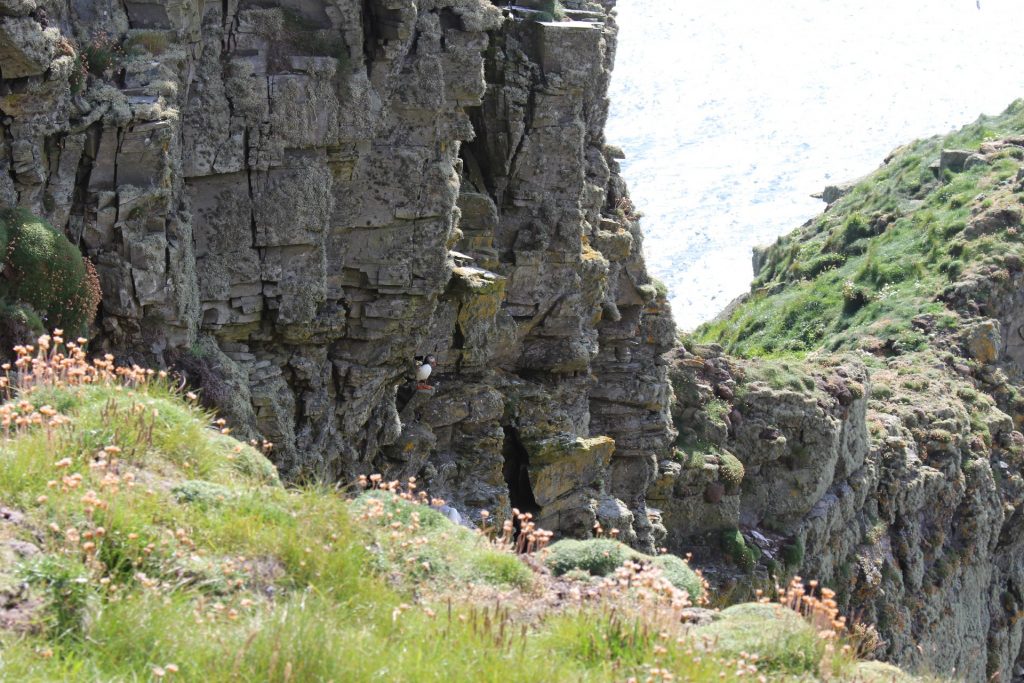
I would like to list more of my bird sightings but, frustratingly, I have no idea what many of them were. I started outlining vague bird shapes on paper and detailing colour patterns in the hope I could identify them later, instead producing a pile of scraps I eventually threw away, the images bearing little resemblance to anything in the bird books I had at home. I hadn’t known until now how many different ducks and divers were covered in only slightly varying proportions of black and white feathers, or the variety of small waders seen scuttling along the waterline.
If I had been able to take a photo it would’ve been helpful, although – as anyone who has tried to photograph wildlife will know – it is difficult getting an image showing features useful for identification at a distance where the subject isn’t just a dot, blurred by sudden motion or escaping just at the moment when the shutter is pressed.
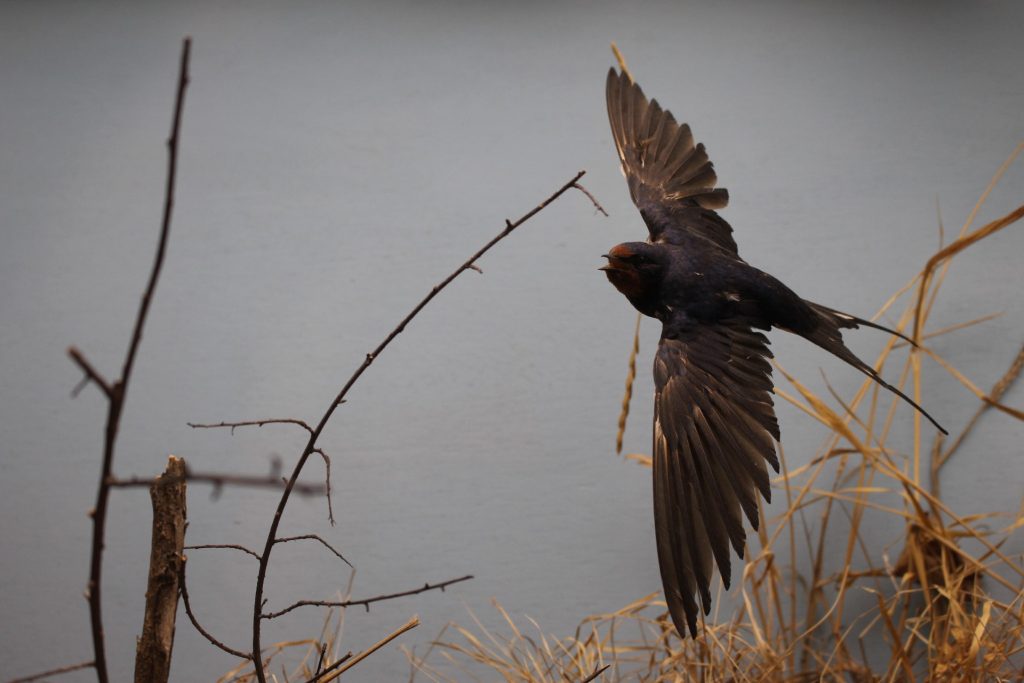
That is where my role investigating natural science collections has been very useful – although natural science covers a wide range of subject material from the natural world, one of the main ways to preserve and present it is as taxidermy mounts. Almost all the examples I have seen on my travels date from the Victorian period when exotic specimens were collected on tours, expeditions and hunting trips around the world. It is quite incredible what and how much was brought back considering the limited and comparatively slow means of transport at the time.
Turning what was collected into mounts for public exhibition was big business and many companies existed for the purpose. The expertise of some, such as the firms of James Rowland Ward and Charles Kirk, was highly sought-after with mounts produced for the rich and famous – and even royalty. Acquisitions were perhaps driven by competition to be named in published accounts, like Rowland Ward’s Records of Big Game – the Guinness Book of Records of its day – documenting the biggest horned, tusked and clawed animals collected since 1882.
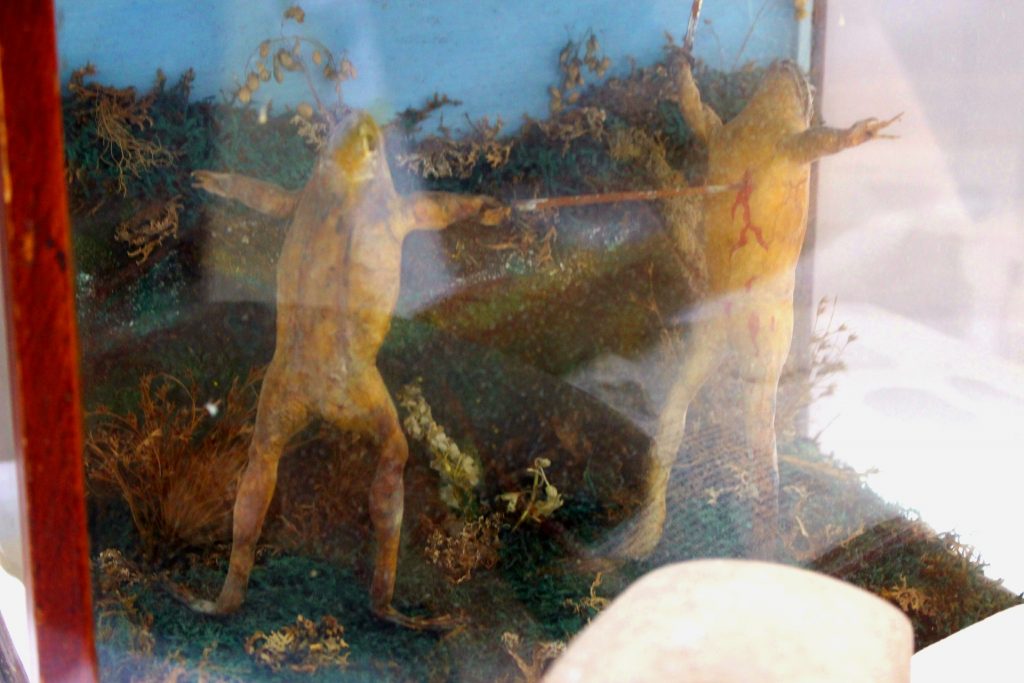
The result was individual mounts of heads or whole animals, diorama landscapes populated with several animals, ‘animal furniture’ such as bears posed upright holding silver trays, and unusual curiosity mounts such as sword-fighting frogs. There are, of course, less well-produced pieces that provide amusement, and I have seen my fair share of scary specimens.
Although exotic specimens are present in almost every collection I have visited, time has been taken to recreate the local wildlife of Scotland. For every flamingo or hornbill on my tour of natural science collections there are ptarmigan in white winter plumage and capercaillie set in rocky dioramas dotted with dry brown fern fronds (Gairloch Museum), scenes of songbirds feeding on garden bird tables (Perth Museum and Art Gallery, The McManus: Dundee’s Art Gallery and Museum), and majestic eagles with their wings outspread to great effect (Fort William Museum). The bonus is that (most of) these specimens have labels or tags to tell me what they are and – in turn – I have been able to identify many of them in the wild.
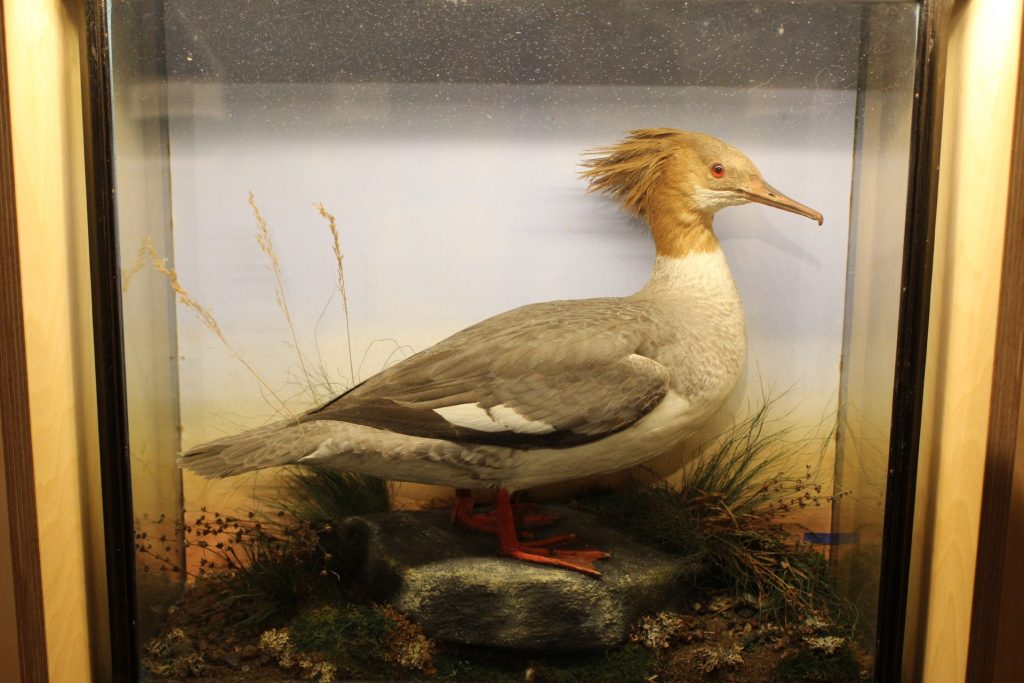
Taxidermy mount of a female goosander (Gairloch Museum) 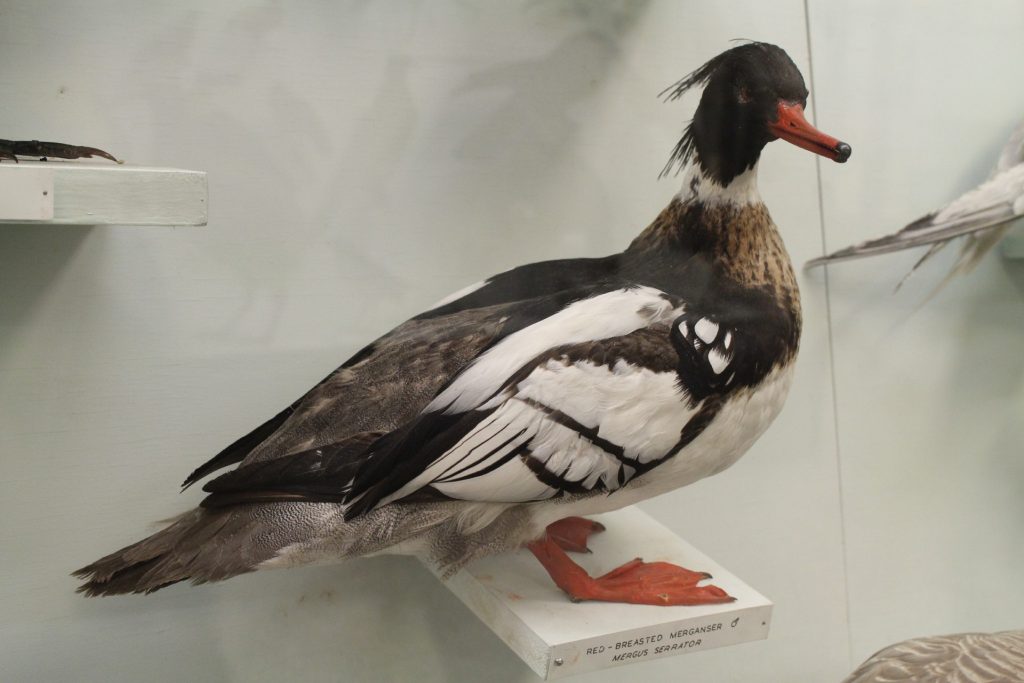
Taxidermy mount of a red breasted merganser (Bell-Pettigrew Museum, University of St Andrews)
While taxidermy is not to everyone’s taste, these specimens do have an important place, not just in museum displays as historical objects, but in outreach education for teaching and research. Newer specimens have been produced from road casualties through organisations like Forestry and Land Scotland, and collaborations between these organisations and local authorities are already providing invaluable resources for public engagement.
In short, we can all learn about the huge and diverse range of wildlife we have around us from taxidermy specimens in museums and – by knowing where to look – we can go out to find and identify the living examples ourselves.
